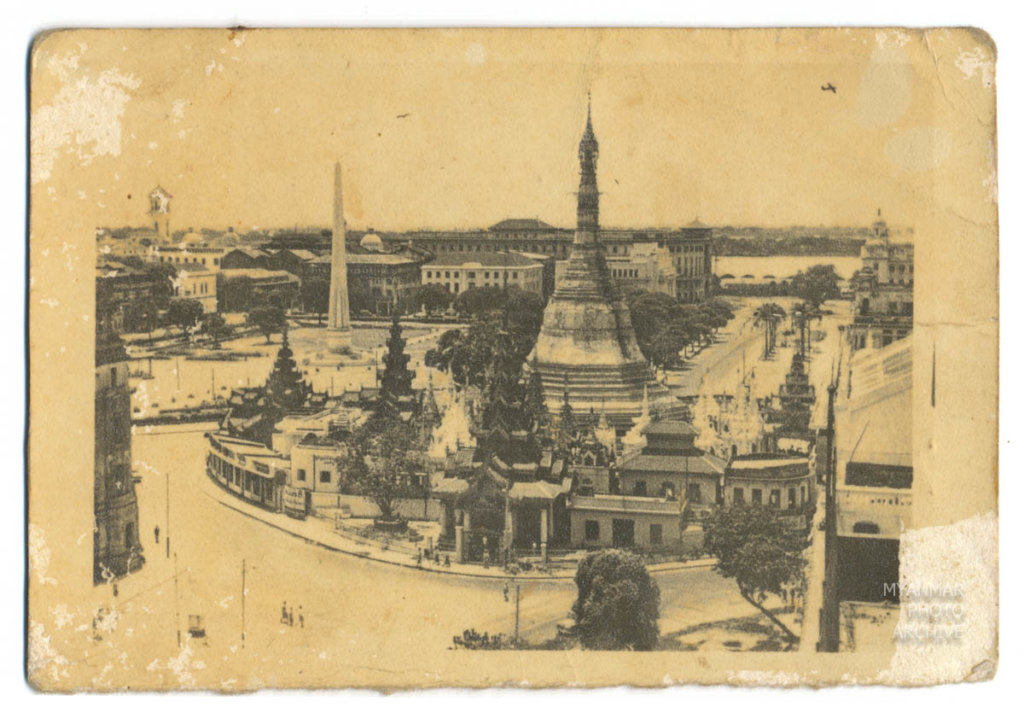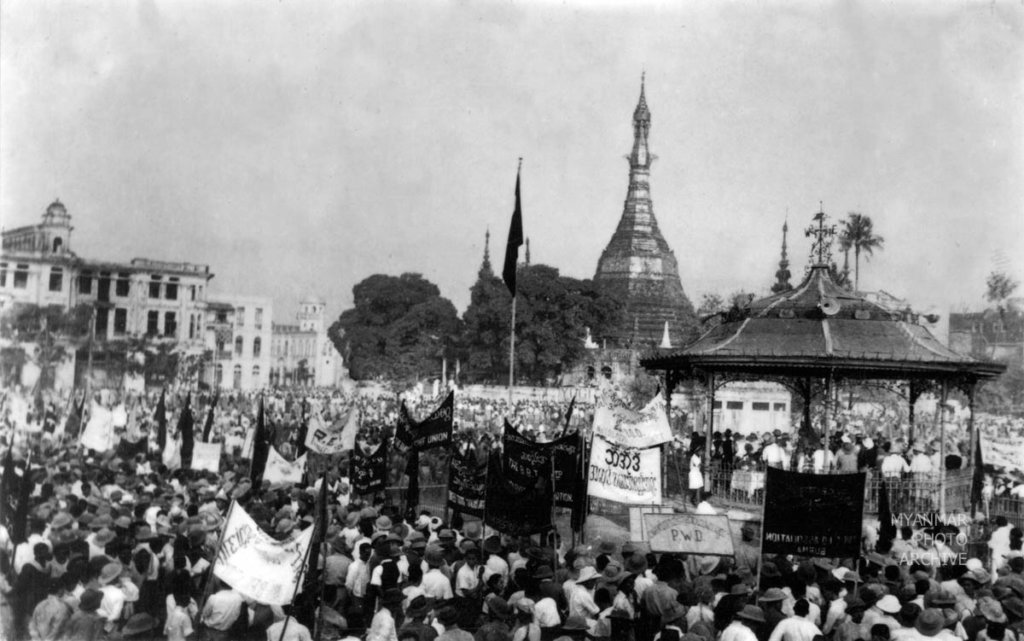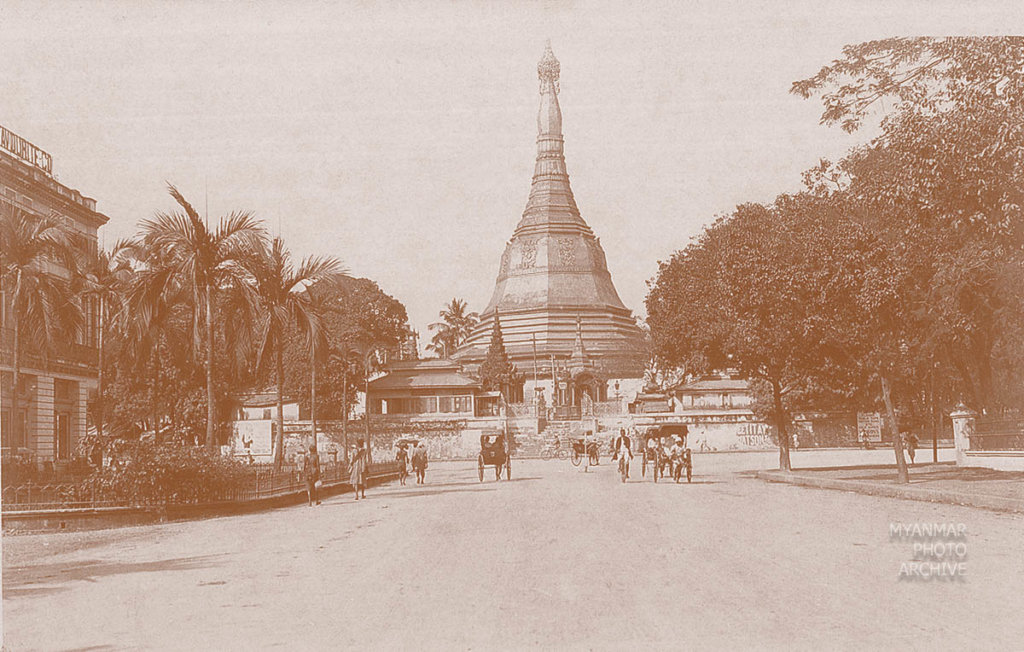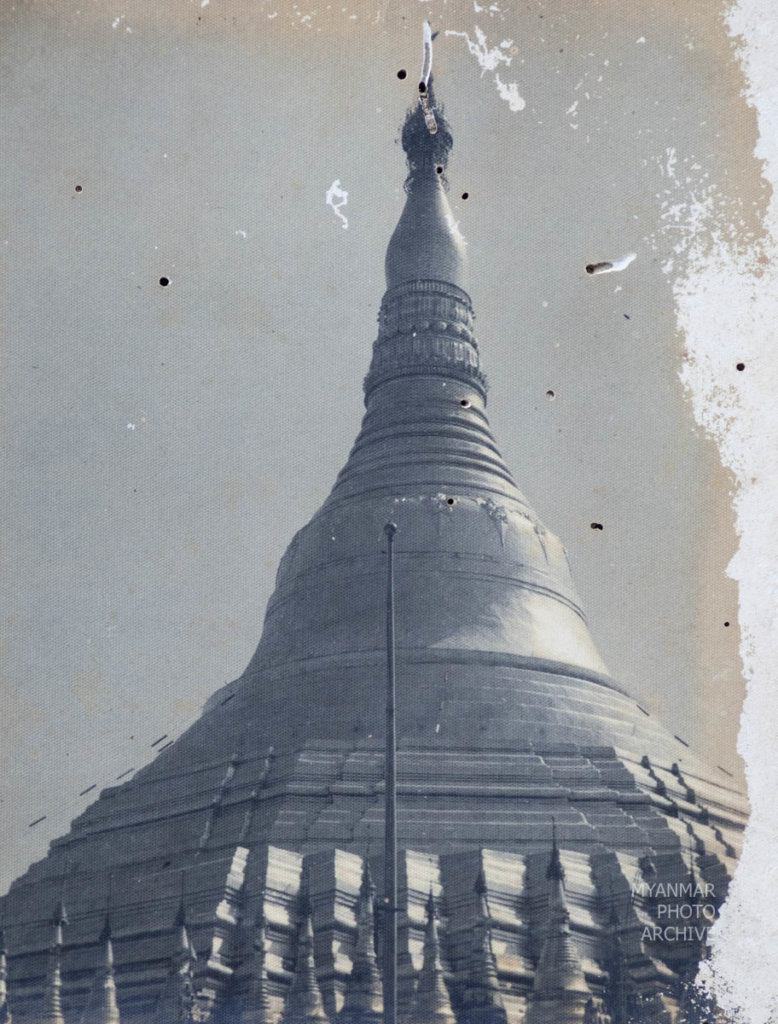Sule Pagoda
By Jonathan Lim
Most people would describe Yangon as a city of change, but I believe that “coexistence” suits it better.
A hike through the city grants many sights. The majority of neighborhoods and roads are lined with modest apartments no taller than five storeys. New bridges and flyovers in construction are everywhere. Rural satellite towns can be found in some places. Tall, urban, commercial towers are constantly being erected, and British-built buildings from the colonial era are still apparent. One can’t help but think about the layered histories that run through the urban sprawl.
The consistent pattern throughout the city’s many stages of life is the making of its pagodas as centerpieces.
Yangon had its humble beginnings as a fishing village centered around the Shwedagon Pagoda. King Alaungpaya renamed it from Dagon and made it the capital of his empire in 1775. Just a century later under British rule, a grandiose plan for transformation was laid out for the city with Sule pagoda acting as its center.
In the picture, you can see a photo of the circular site of Sule pagoda in the mid-1900s. In the background on the left, you can see the Independence monument standing in Maha Bandula Park. Colonial style buildings populate the area, and the river is visible just behind them.
Legend has it that it was a powerful nat’s (spirit) home where the Sule Pagoda now stands. His name was Sularata, and it was through his help that the king of the nats, Sakra, and the King Okkalapa could build a shrine for a sacred relic of Buddha – a shrine that would eventually become the Shwedagon Pagoda.
The Sule pagoda was constructed with an octagonal bell shape. It stands a tall 44 meters, and is topped with a golden spire. The pagoda allegedly enshrines a hair strand of the Buddha that was initially given to his first two disciples, the merchant brothers Trapusa and Bahalika.
The pagoda has gone through changes, much like the city itself. It was rebuilt in the 1880s, and today the circular site is walled by a ring of many small shops and services, a ring that is absent in the picture.
It’s also served a prominent few roles in Burmese politics, as a rallying point in the infamous 88 Uprisings and the Saffron Revolution of 2007.
These days, the pagoda is a major tourist attraction and spot for local citizens. The downtown Yangon it resides in is a bustling commercial area of many different shops, restaurants, offices, and gathering spots. Walking a little further south will welcome you to a port, where you can take a “river taxi” to go sightseeing.
Despite not being an early worm myself, I still find a morning visit and walk through a pagoda to be very pleasant and tranquil. Is there any chance that the spiritual history of the Sule Pagoda has given it awesome, mystical properties? For me personally, it feels bigger on the inside, and I’ve always found that to be pretty unusual.
Citations:
Jonathan is a freelance graphic designer who specializes in logos and brand identity, and a freelance writer currently working with Myanmar Photo Archive. His greatest achievement to date is being able to sit through five long, boring Transformers movies and still manage to be entertained.



